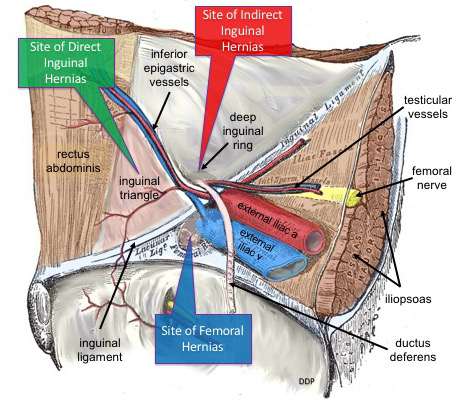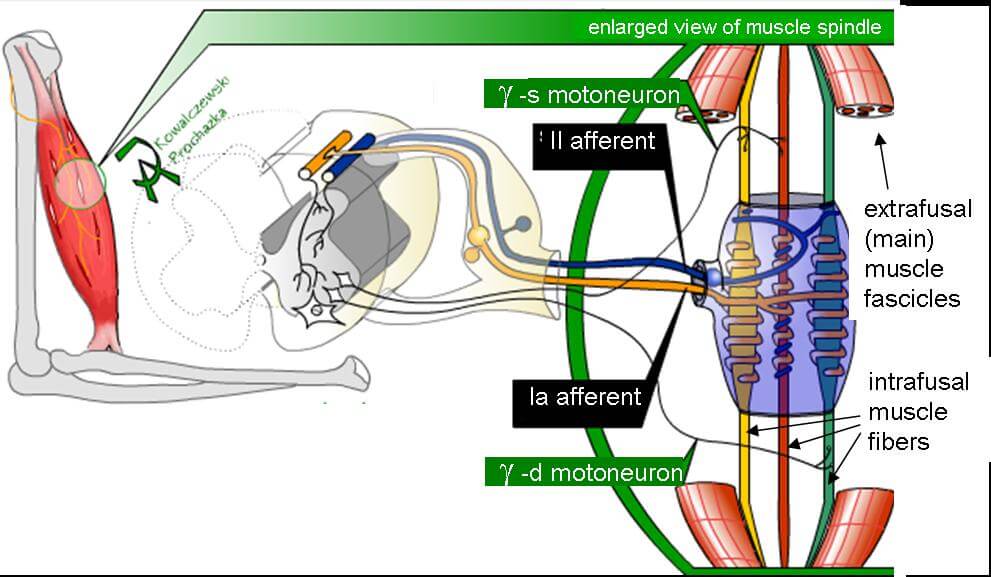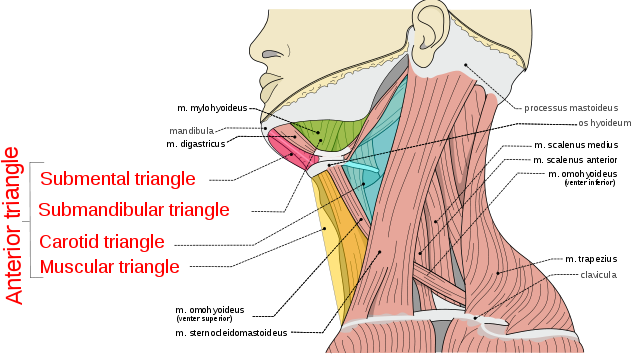Walls of Inguinal Canal
Mnemonic: SALP 2 X MALT
Starting from superior, moving counterclockwise in order to posterior:
1. Superior (Roof): 2 Muscles (Internal oblique, Transverse abdominus)
2. Anterior: 2 Aponeuroses (External abdominal oblique, Internal abdominal oblique)
3. Lower (Floor): 2 Ligaments (Lacunar and Inguinal)
4. Posterior: 2 T‘s (conjoint Tendon and Transversalis fascia)
Deep inguinal ring is defect in posterior wall (Transversalis fascia).
Superficial inguinal ring is defect in anterior wall (External abdominal oblique aponeurosis).
Inguinal triangle or Hesselbach’s triangle
Mnemonic: RIP
The triangle is defined by following structures:
- Medial border: Rectus sheath (lateral margin)
- Superolateral border: Inferior epigastric vessels
- Inferior border: Poupart’s (inguinal) ligament
Inguinal Hernia
Mnemonic: MDs don’t LIe
- Medial to inferior epigastric vessels: Direct hernia
- Lateral to inferior epigastric vessels: Indirect hernia



